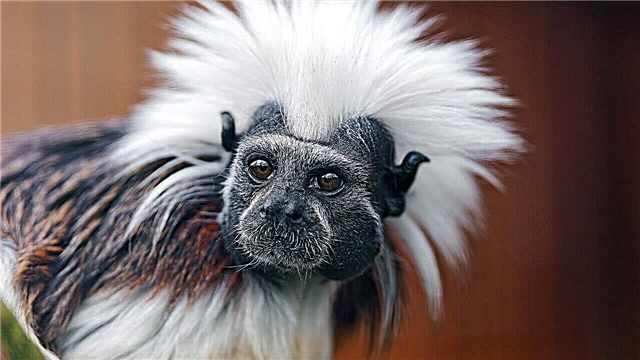There is a lot of water in Russia - over its vast territory, which occupies one seventh of the land, flow more than two and a half million rivers. Most of them are known and loved only by those who live (or rest) on their shores. However, rivers of a completely different order are more interesting and important - giant water arteries that can be seen from space. For centuries, these giants have served our ancestors as sources of water, food, as transport routes and continue to serve people to this day.
Determining which longest river in Russia is not so simple. Historically, the lands east of the Urals were populated unevenly at different time periods. And therefore, throughout its course, the river could repeatedly change its name. Sometimes it happened that supposedly the influx of the “main” river turned out to be longer and more full-flowing than the river itself. Therefore, in order to avoid confusion for the rating of the longest rivers in Russia, we chose only those that flow under the same name from source to mouth.
10. Ural - length 2428 km
 The majestic Siberian Urals opens the rating of the longest rivers in Russia without tributaries. Although it occupies a modest tenth place, however, if you look only at Europe, in length it is second only to the Volga and Danube. Once the Cossacks, who began to explore the expanses of the Trans-Urals, called him Yaik. And still under the old name, he appears in numerous Cossack songs.
The majestic Siberian Urals opens the rating of the longest rivers in Russia without tributaries. Although it occupies a modest tenth place, however, if you look only at Europe, in length it is second only to the Volga and Danube. Once the Cossacks, who began to explore the expanses of the Trans-Urals, called him Yaik. And still under the old name, he appears in numerous Cossack songs.
Ural - capricious river; over the centuries, he repeatedly changed his channel, leaving scattered old ladies, lakes and a dense network of channels in abundance. The Urals, like the Volga, fall into the Caspian Sea.
9. Ishim - 2450 km
 For neighbors, Ishim is of greater importance. In Russia, on the banks of this river is the only city of Ishim. While in neighboring Kazakhstan there are several, including even the capital of this country. True, you have to pay for popularity - according to the latest environmentalists, swimming in Ishim is better not worth it. In addition to ordinary household waste, the river’s waters also carry industrial waste — oil products, iron, oil, and manganese compounds. And all this wealth is seasoned with pesticides that are washed away into the river every year. Ishim falls into the Irtysh.
For neighbors, Ishim is of greater importance. In Russia, on the banks of this river is the only city of Ishim. While in neighboring Kazakhstan there are several, including even the capital of this country. True, you have to pay for popularity - according to the latest environmentalists, swimming in Ishim is better not worth it. In addition to ordinary household waste, the river’s waters also carry industrial waste — oil products, iron, oil, and manganese compounds. And all this wealth is seasoned with pesticides that are washed away into the river every year. Ishim falls into the Irtysh.
8. Vilyui - 2650 km
 Vilyui is the longest tributary of the Lena River, which in itself is far from a small river. It flows through the territory of Yakutia and the Krasnoyarsk Territory. On the river are two hydroelectric power plants, launched in Soviet times. They provide light, heat and energy to nearby mining facilities.
Vilyui is the longest tributary of the Lena River, which in itself is far from a small river. It flows through the territory of Yakutia and the Krasnoyarsk Territory. On the river are two hydroelectric power plants, launched in Soviet times. They provide light, heat and energy to nearby mining facilities.
Near one of the tributaries of Vilyui there is a place of pilgrimage for ufologists, lovingly nicknamed by old-timers “Death Valley”. According to rumors, there are huge mysterious objects, similar to boilers, ranging in size from six to nine meters in diameter, and made of strange metal.
7. Amur - 2824 km
 "Clouds walk gloomily over Cupid" - is sung in an old Soviet song. It is on this river that separates the lands of the then USSR and present-day Russia, from China that three tank men, heroes of the song, serve.
"Clouds walk gloomily over Cupid" - is sung in an old Soviet song. It is on this river that separates the lands of the then USSR and present-day Russia, from China that three tank men, heroes of the song, serve.
The name of the river itself speaks of its size - "Amur" comes from the word "damur", which means in the language of local residents, the Manchu, literally "big river". It begins in the steppes of Mongolia and flows into the Sea of Okhotsk. Amur is exceptionally rich in fish - up to 139 different species of fish live in it. But only one quarter of this abundance has commercial value.
6. Lower Tunguska - 2989 km
 Lower Tunguska is almost as long as the river where it flows into the Yenisei River. Although in the summer months the river is full-flowing (water flow reaches 31 thousand m3 / s), but in winter it barely gains a quarter of this amount. The reason is permafrost; chilled underground springs barely support the life of the river. But during the melting of snow Tunguska crushes rocks and pulls out trees with roots.
Lower Tunguska is almost as long as the river where it flows into the Yenisei River. Although in the summer months the river is full-flowing (water flow reaches 31 thousand m3 / s), but in winter it barely gains a quarter of this amount. The reason is permafrost; chilled underground springs barely support the life of the river. But during the melting of snow Tunguska crushes rocks and pulls out trees with roots.
5. Yenisei - 3487 km
 From the tributary of the Yenisei, we pass to the Yenisei itself. The river separates Eastern Siberia from Western. The beginning of the Yenisei, the confluence of two tributaries, is located near the city of Kyzyl, the capital of Tuva. And it flows several thousand kilometers north into the Kara Sea, forming a whole bay of its name.
From the tributary of the Yenisei, we pass to the Yenisei itself. The river separates Eastern Siberia from Western. The beginning of the Yenisei, the confluence of two tributaries, is located near the city of Kyzyl, the capital of Tuva. And it flows several thousand kilometers north into the Kara Sea, forming a whole bay of its name.
Throughout the Yenisei, there are many cities, several hydroelectric power stations and a number of reservoirs. Also on the banks of the Yenisei are several beautiful Russian reserves - such as the Krasnoyarsk “Pillars” and the Sayano-Shushensky Nature Reserve.
4. Volga - 3531 km
 The longest river in Europe, without a doubt, deserves the title of "mother". From ancient times, Slavs and peoples settled on its shores, which in the future became part of Russia. For the first time, the Volga is mentioned in its "Notes" by the ancient geographer Herodotus. In the Middle Ages and New Time, it served as a trade route connecting the north of the country with the south, and during the years of industrialization, after the establishment of Soviet power, the hydroelectric power stations on the Volga provided industrial enterprises of the young state with electricity.
The longest river in Europe, without a doubt, deserves the title of "mother". From ancient times, Slavs and peoples settled on its shores, which in the future became part of Russia. For the first time, the Volga is mentioned in its "Notes" by the ancient geographer Herodotus. In the Middle Ages and New Time, it served as a trade route connecting the north of the country with the south, and during the years of industrialization, after the establishment of Soviet power, the hydroelectric power stations on the Volga provided industrial enterprises of the young state with electricity.
The Volga begins with a modest, unremarkable spring, beating on the Valdai Upland, and ends with a delta more than 170 km wide.
3. Ob - 3650 km
 The third longest river in Russia is the Ob. It would be the first, if we consider it along with the longest tributary, the Irtysh. Then its length would be an impressive 5410 km. The Ob basin is the largest in Russia - its total area is 2990 thousand km2.
The third longest river in Russia is the Ob. It would be the first, if we consider it along with the longest tributary, the Irtysh. Then its length would be an impressive 5410 km. The Ob basin is the largest in Russia - its total area is 2990 thousand km2.
Despite the magnitude and fullness (during the flood period, the Ob can spill up to 30 km wide), most of the time in the year the Ob spends under the ice. There are many cities throughout the river, including major cities such as Novosibirsk. The Ob flows into a bay named after itself in the Kara Sea.
2. Irtysh - 4248 km
 If the development of Siberia went the other way, the Irtysh would be in the first place of the rating. But what happened happened, and the much longer Irtysh is considered only a tributary of the Ob, and together they occupy 6th place in the list of the longest rivers in the world.
If the development of Siberia went the other way, the Irtysh would be in the first place of the rating. But what happened happened, and the much longer Irtysh is considered only a tributary of the Ob, and together they occupy 6th place in the list of the longest rivers in the world.
The Irtysh originates in China, where the Chinese take almost a third of the flow to their needs, then flows through Kazakhstan, where the river is already so large that ships can go along it.
The Irtysh feeds both industrial and agricultural enterprises of Kazakhstan, and provides water to the capital of the country, Astana. The river also does not have to rest on the territory of Russia - there are many cities and several power plants on it.
1. The longest river in Russia is the Lena (4400 km)
 In Yakut language, the name of Lena sounds like "big river". The longest river in Russia stretches for 4400 km from the Baikal ranges to the Arctic Ocean and flows into the Laptev Sea. It flows in harsh conditions - the surrounding lands are constrained by permafrost. Therefore, there are few cities on the Lena, and the largest of them is Yakutsk.
In Yakut language, the name of Lena sounds like "big river". The longest river in Russia stretches for 4400 km from the Baikal ranges to the Arctic Ocean and flows into the Laptev Sea. It flows in harsh conditions - the surrounding lands are constrained by permafrost. Therefore, there are few cities on the Lena, and the largest of them is Yakutsk.

For many hundreds of kilometers the river flows through almost deserted terrain. Like other rivers in permafrost, Lena “eats” almost completely thawed snow and rain, so in winter the water level in it is low. Lena spends most of the time of the year under a thick layer of ice, freeing herself from it only for a short 4-5 warm months. Although the navigation period is short-lived, cargoes are rafted along the Lena River, cruises pass, people go boating, go on river trips and visit the sights. One of the most famous is the Shishkinsky rocks, where the work of ancient people has survived to this day.
List of the largest rivers in Russia
The table shows 75 rivers with a length of at least 1000 km.
| № | Name | Length, km | In Russia, km | Falls into |
|---|---|---|---|---|
| 1 | Yenisei - Angara - Baikal - Selenga - Ider | 5550 | 4460 | Yenisei Gulf, Kara Sea |
| 2 | Ob - Irtysh | 5410 | 3050 | Gulf of Ob, Kara Sea |
| 3 | Cupid - Argun - Kerulen | 5052 | 4133 | Amur estuary, Sea of Okhotsk |
| 4 | Lena - Vitim - Vitimkan | 4692 | 4692 | Laptev sea |
| 5 | Ob - Chulym - White Iyus | 4565 | 4565 | Gulf of Ob, Kara Sea |
| 6 | Cupid - Argun - Hailar | 4444 | 4133 | Amur estuary, Sea of Okhotsk |
| 7 | Lena | 4400 | 4400 | Laptev sea |
| 8 | Ob - Katun | 4338 | 4338 | Gulf of Ob, Kara Sea |
| 9 | Yenisei - Small Yenisei (Kaa-Khem) | 4287 | 3930 | Yenisei Gulf, Kara Sea |
| 10 | Cupid - Shilka - Onon | 4279 | 3981 | Amur estuary, Sea of Okhotsk |
| 11 | Irtysh | 4248 | 1900 | R. Ob |
| 12 | Yenisei - Big Yenisei (Biy-Hem) | 4123 | 4123 | Yenisei Gulf, Kara Sea |
| 13 | Volga - Oka | 3731 | 3731 | Caspian Sea |
| 14 | Ob actually | 3650 | 3650 | Gulf of Ob, Kara Sea |
| 15 | Volga - Kama | 3560 | 3560 | Caspian Sea |
| 16 | Volga | 3531 | 3531 | Caspian Sea |
| 17 | Yenisei actually | 3487 | 3487 | Yenisei Gulf, Kara Sea |
| 18 | Lower Tunguska | 2989 | 2989 | R. Yenisei |
| 19 | Cupid itself | 2824 | 2824 | Amur estuary, Sea of Okhotsk |
| 20 | Vilyuy | 2650 | 2650 | R. Lena |
| 21 | Kolyma - Kulu | 2513 | 2513 | East-Siberian Sea |
| 22 | Ishim | 2450 | 800 | R. Irtysh |
| 23 | Ural | 2422 | 1550 | Caspian Sea |
| 24 | Little deer | 2292 | 2292 | Gulf of Olenek, Laptev Sea |
| 25 | Aldan | 2273 | 2273 | R. Lena |
| 26 | Dnieper | 2201 | 485 | Black Sea |
| 27 | Kolyma | 2129 | 2129 | East-Siberian Sea |
| 28 | Vitim - Vitimkan | 1978 | 1978 | R. Lena |
| 29 | Indigirka - Hastah | 1977 | 1977 | East-Siberian Sea |
| 30 | Don - Voronezh - Floor Voronezh | 1923 | 1923 | Taganrog Bay, Sea of Azov |
| 31 | Don | 1870 | 1870 | Taganrog Bay, Sea of Azov |
| 32 | Stony Tunguska | 1865 | 1865 | R. Yenisei |
| 33 | Vitim | 1837 | 1837 | R. Lena |
| 34 | Pechora | 1809 | 1809 | Pechora Bay, Pechora Sea, Barents Sea |
| 35 | Kama | 1805 | 1805 | Volga River |
| 36 | Northern Dvina - Vychegda | 1803 | 1803 | Dvinskaya Bay, White Sea |
| 37 | Chulym | 1799 | 1799 | R. Ob |
| 38 | Hangar | 1779 | 1779 | R. Yenisei |
| 39 | Indigirka | 1726 | 1726 | East-Siberian Sea |
| 40 | Northern Dvina - Sukhona - Lake Kubene - Kubena | 1683 | 1683 | Dvinskaya Bay, White Sea |
| 41 | Khatanga - Kotui | 1636 | 1636 | Khatanga Bay, Laptev Sea |
| 42 | Ket | 1621 | 1621 | R. Ob |
| 43 | Argun - Hailar | 1620 | 1487 | R. Amur |
| 44 | Tobol | 1591 | 1090 | R. Irtysh |
| 45 | Alazeya | 1590 | 1590 | East-Siberian Sea |
| 46 | Oka | 1500 | 1500 | R. Volga |
| 47 | Yana - Sartang | 1492 | 1492 | Laptev sea |
| 48 | Amga | 1462 | 1462 | R. Lena |
| 49 | Olekma | 1436 | 1436 | R. Lena |
| 50 | Selenga - Ider | 1433 | 409 | Lake Baikal |
| 51 | White | 1430 | 1430 | Nizhnekamsk reservoir, Kama |
| 52 | Taz | 1401 | 1401 | Taz Bay, Kara Sea |
| 53 | Tavda - Lozva | 1356 | 1356 | R. Tobol |
| 54 | Northern Dvina - South | 1318 | 1318 | Dvinskaya Bay, White Sea |
| 55 | Vyatka | 1314 | 1314 | R. Kama |
| 56 | Zeya | 1242 | 1242 | R. Amur |
| 57 | Taseeva - Uda (Chuna) | 1240 | 1240 | R. Hangar |
| 58 | Uda (Chuna) | 1203 | 1203 | R. Taseeva |
| 59 | Marha | 1181 | 1181 | R. Vilyuy |
| 60 | Demyanka | 1160 | 1160 | R. Irtysh |
| 61 | Omolon | 1150 | 1150 | R. Kolyma |
| 62 | Anadyr | 1150 | 1150 | Anadyr Bay, Bering Sea |
| 63 | Vychegda | 1130 | 1130 | R. Northern Dvina |
| 64 | Gum | 1130 | 555 | R. Dnieper |
| 65 | Conda | 1097 | 1097 | R. Irtysh |
| 66 | Om | 1091 | 1091 | R. Irtysh |
| 67 | Vasyugan | 1082 | 1082 | R. Ob |
| 68 | May | 1053 | 1053 | R. Aldan |
| 69 | Seversky Donets | 1053 | 335 | R. Don |
| 70 | Onon | 1032 | 734 | R. Shilka |
| 71 | Tour | 1030 | 1030 | R. Tobol |
| 72 | Pur - Pyakupur | 1024 | 1024 | Taz Bay, Kara Sea |
| 73 | Western Dvina (Daugava) | 1020 | 325 | Gulf of Riga, Baltic Sea |
| 74 | Biryusa (She) | 1012 | 1012 | R. Taseeva |
| 75 | Hopper | 1010 | 1010 | R. Don |












